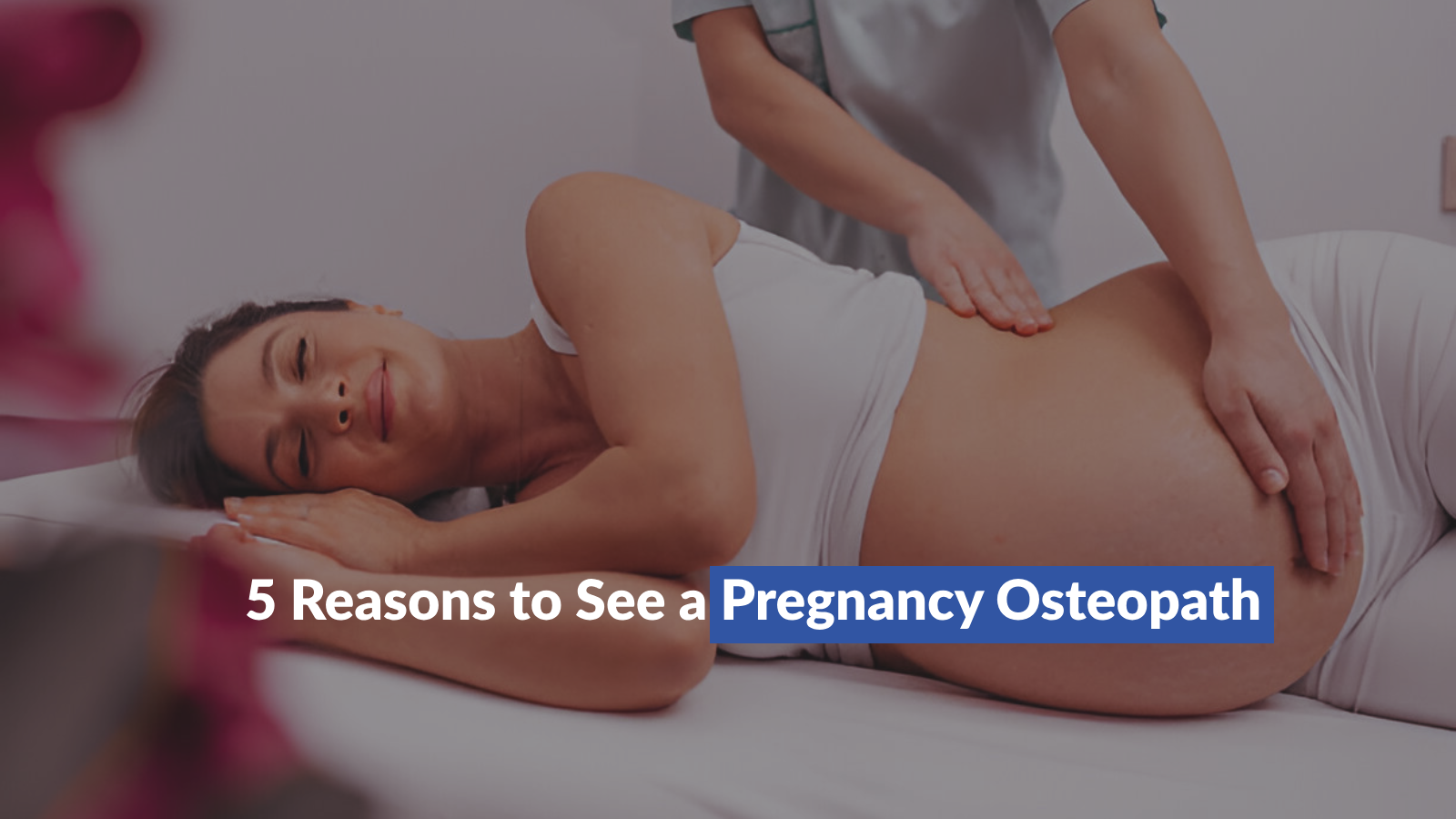Pregnancy is a transformative journey filled with joy and challenges. One way to manage these changes effectively is by visiting a pregnancy osteopath. Here’s a detailed look at why you should consider it.
What is Osteopathic Treatment?
Osteopathic treatment is a form of manual therapy focusing on the musculoskeletal system, which includes muscles, bones, and joints. Osteopaths use their hands to diagnose and treat various conditions by improving body mechanics, promoting circulation, and enhancing overall health. This holistic approach addresses the symptoms and underlying causes of discomfort or pain.
Key Components of Osteopathic Treatment
- Manual Techniques: Osteopaths use various techniques, including soft tissue manipulation, stretching, and joint mobilization. These techniques improve movement, reduce pain, and enhance overall body function.
- Holistic Approach: Osteopathy treats the whole body rather than just specific symptoms. This comprehensive approach ensures that all contributing factors to a condition are addressed, promoting overall health and well-being.
- Patient-centered Care: Osteopaths develop personalized treatment plans based on individual needs. Each patient’s unique condition and circumstances are considered to provide the most effective care.
Is Osteopathic Treatment Safe in Pregnancy?
Safety is a primary concern for expecting mothers considering any form of treatment. Osteopathic treatment is generally safe during pregnancy when performed by a qualified and experienced osteopath.
Why It’s Safe
- Gentle Techniques: Osteopaths use gentle, non-invasive techniques tailored to the needs of pregnant women. These techniques minimize any risk to the mother and the baby.
- Professional Training: Osteopaths undergo extensive training to treat pregnant patients safely. This includes specialized knowledge of pregnancy-related conditions and appropriate treatment methods.
- Patient Monitoring: Continuous assessment during treatment ensures that any discomfort or adverse reactions are promptly addressed. Osteopaths monitor the patient’s response to treatment and adjust techniques as needed.
Precautions
- Always consult with your primary healthcare provider before starting osteopathic treatment. It ensures that all aspects of your health are considered and that the treatment is appropriate for your situation.
- Ensure the osteopath is certified and has experience in treating pregnant women. Specialized training and experience are crucial for providing safe and effective care.
What Pregnancy Conditions are Treated by a Pregnancy Osteopath?
Pregnancy brings about numerous physical changes, some of which can cause discomfort or pain. A pregnancy osteopath can help manage these conditions effectively.
Common Conditions Treated
- Lower Back Pain: Lower back pain is common due to the shift in the center of gravity and hormonal changes during pregnancy. Osteopathy for pregnancy back pain can relieve tension, improve posture, and alleviate pain by addressing the underlying causes of discomfort.
- Pelvic Girdle Pain: Pelvic girdle pain affects the pelvic joints and can cause significant discomfort. Osteopathic manipulation can stabilize and support the pelvic region, reducing pain and improving mobility.
- Sciatica: Sciatica is characterized by pain radiating down the leg, often caused by pressure on the sciatic nerve. Osteopath for pregnancy sciatica can alleviate this pressure through targeted techniques, relieving pain and discomfort.
- Neck and Shoulder Pain: Neck and shoulder pain often result from postural changes and increased weight during pregnancy. Gentle manipulation can ease muscle tension and improve posture, reducing pain and discomfort.
- Swelling and Circulation Issues: Swelling and circulation issues are common during pregnancy due to increased blood volume and pressure on veins. Osteopathic techniques can improve blood flow, reduce swelling, and promote overall health.
What is Postpartum Pregnancy Treatment?
Postpartum recovery is crucial for new mothers. Osteopathic treatment can play a significant role in this phase by addressing physical strain and promoting overall well-being.
Benefits of Postpartum Osteopathic Treatment
- Pelvic Realignment: Pregnancy and childbirth can misalign the pelvis. Osteopathic treatment helps restore proper alignment, reduce pain and improve mobility.
- Back and Neck Pain Relief: Carrying and feeding the baby can strain the back and neck. Osteopathic techniques can alleviate this pain, promoting comfort and well-being.
- Improved Circulation: Enhanced blood flow aids recovery, reduces swelling, and supports overall health. It is particularly important for new mothers who may experience circulation issues postpartum.
- Stress Relief: Gentle manipulation can reduce stress and promote relaxation, supporting mental and emotional well-being during the postpartum period.
Key Areas of Focus
- Core Strengthening: Pregnancy can stretch and weaken core muscles. Osteopathic treatment helps rebuild these muscles, improving strength and stability.
- Posture Correction: Postural changes during pregnancy and childbirth can cause discomfort and pain. Osteopaths address these changes, promoting proper posture and reducing strain.
- Scar Tissue Management: For those who had a cesarean section, osteopathic treatment can help manage and minimize scar tissue, promoting healing and reducing discomfort.
Role of Pelvic Floor Osteopathy in Pregnancy
The pelvic floor is a group of muscles and tissues that support the bladder, uterus, and bowel. These structures undergo considerable strain during pregnancy due to the growing uterus and hormonal changes. Maintaining pelvic floor health is essential for managing pain, preventing complications, and ensuring a smoother pregnancy.
Pelvic floor osteopathy uses manual techniques to assess and treat dysfunctions, providing relief and improving function. Here’s how it can benefit pregnant women:
Pain Relief
- Pelvic Pain: Osteopathic techniques alleviate tension and pain in the pelvic region.
- Lower Back Pain: Addresses the common issue of back pain caused by the shift in the center of gravity and increased weight.
Pelvic Stability
- Joint Alignment: Ensures proper alignment of the pelvic joints, enhancing stability.
- Muscle Support: Strengthens the muscles to support pelvic organs effectively.
Improved Function
- Bladder Control: Helps manage urinary incontinence, a common issue during pregnancy.
- Digestive Health: Eases constipation and improves digestive function by relieving pelvic floor tension.
Conclusion
Seeing a pregnancy osteopath can offer significant benefits during and after pregnancy. Osteopathic treatment provides a holistic approach to managing pregnancy-related discomforts, ensuring both mother and baby are in good health. It is a safe, gentle, and effective way to address various conditions and promote well-being. Always consult your healthcare provider and choose a qualified osteopath to ensure the best care for you and your baby.
By understanding the role of osteopathic treatment in pregnancy, you can make informed decisions that support your health and well-being throughout this transformative journey. Osteopathy offers a comprehensive approach to managing the physical changes and challenges of pregnancy, ensuring a healthier and more comfortable experience for expecting mothers.


